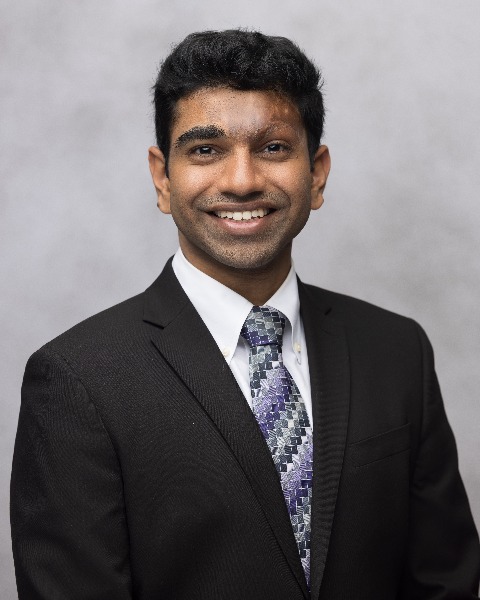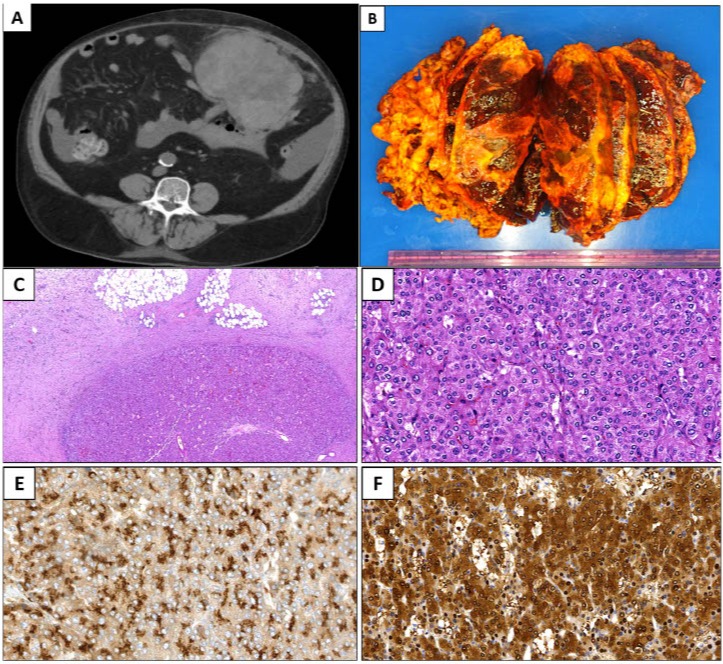Back
Poster Session C - Monday Afternoon
C0564 - Recurrence of Hepatocellular Carcinoma After Orthotopic Liver Transplant
Monday, October 24, 2022
3:00 PM – 5:00 PM ET
Location: Crown Ballroom

Sunil Dommaraju, BS
University of Illinois at Chicago
Chicago, IL
Presenting Author(s)
Sourav Bansal, 1, Sunil Dommaraju, BS1, Sarang Thaker, MD, MS1, Saman Karimi, MD, MS1, Grace Guzman, MD2, Pierpaolo Di Cocco, MD, PhD1, Enrico Benedetti, MD1, Sean Koppe, MD1
1University of Illinois at Chicago, Chicago, IL; 2University of Illinois Medical Center, Chicago, IL
Introduction: Liver transplantation (LT) is the preferred treatment for hepatocellular carcinoma (HCC) in patients with decompensated cirrhosis. Recurrence of HCC after LT is rare, and high-risk features include viable tumor on explant, larger tumor size, elevated alpha fetoprotein (AFP), and micro/macrovascular invasion. The Risk Estimation of Tumor Recurrence After Transplant (RETREAT) score estimates HCC recurrence risk with a 5-year recurrence risk more than 75% in scores 5+. We present a case of extrahepatic recurrent HCC after LT.
Case Description/Methods: A 75-year-old male with history of alcohol-associated cirrhosis complicated by biopsy-confirmed HCC treated with radiofrequency ablation (RFA) underwent LT. His RETREAT score was 1 with negative surveillance scans through 1-year post-LT. The patient was lost to follow up and did not undergo surveillance. Three years post-LT, he developed diffuse abdominal pain and presented to a local hospital where contrast-enhanced computed tomography (CT) abdomen demonstrated an 11-centimeter omental mass with biopsy confirming HCC. This mass likely stemmed from tract seeding during RFA or pre-LT biopsy. AFP was normal. Subsequent positron emission tomography scan showed isolated uptake at the omental mass. The patient later re-presented to a local hospital with abdominal pain and fatigue and was found to be anemic with a hemoglobin 5 g/dL. The patient was transferred to our center where multidisciplinary discussion with hepatology, oncology, radiation oncology, and transplant surgery was conducted. CT abdomen revealed intraabdominal bleeding from the now enlarged mass (Fig. 1A), which necessitated resection (Fig. 1B). Pathology confirmed HCC (Fig. 1C-F). Post-resection surveillance imaging has not demonstrated evidence of disease.
Discussion: This case highlights the importance of continued HCC surveillance post-LT and the possible complications of RFA and biopsy. A diagnosis of HCC in cirrhotics can be made radiographically with the Liver Reporting and Data System (LI-RADS) criteria thus avoiding invasive diagnostics. Peak recurrence occurs within 2-3 years post-LT. The most common extrahepatic sites are lungs, bone, soft tissue, and peritoneum, and surgical resection is an independent predictor of long-term survival if metastatic disease is isolated to one organ. Systemic chemotherapy can be offered, but immunotherapy carries the risk of organ rejection in small studies. A multi-disciplinary approach should be pursued in patients with HCC recurrence post-LT.

Disclosures:
Sourav Bansal, 1, Sunil Dommaraju, BS1, Sarang Thaker, MD, MS1, Saman Karimi, MD, MS1, Grace Guzman, MD2, Pierpaolo Di Cocco, MD, PhD1, Enrico Benedetti, MD1, Sean Koppe, MD1. C0564 - Recurrence of Hepatocellular Carcinoma After Orthotopic Liver Transplant, ACG 2022 Annual Scientific Meeting Abstracts. Charlotte, NC: American College of Gastroenterology.
1University of Illinois at Chicago, Chicago, IL; 2University of Illinois Medical Center, Chicago, IL
Introduction: Liver transplantation (LT) is the preferred treatment for hepatocellular carcinoma (HCC) in patients with decompensated cirrhosis. Recurrence of HCC after LT is rare, and high-risk features include viable tumor on explant, larger tumor size, elevated alpha fetoprotein (AFP), and micro/macrovascular invasion. The Risk Estimation of Tumor Recurrence After Transplant (RETREAT) score estimates HCC recurrence risk with a 5-year recurrence risk more than 75% in scores 5+. We present a case of extrahepatic recurrent HCC after LT.
Case Description/Methods: A 75-year-old male with history of alcohol-associated cirrhosis complicated by biopsy-confirmed HCC treated with radiofrequency ablation (RFA) underwent LT. His RETREAT score was 1 with negative surveillance scans through 1-year post-LT. The patient was lost to follow up and did not undergo surveillance. Three years post-LT, he developed diffuse abdominal pain and presented to a local hospital where contrast-enhanced computed tomography (CT) abdomen demonstrated an 11-centimeter omental mass with biopsy confirming HCC. This mass likely stemmed from tract seeding during RFA or pre-LT biopsy. AFP was normal. Subsequent positron emission tomography scan showed isolated uptake at the omental mass. The patient later re-presented to a local hospital with abdominal pain and fatigue and was found to be anemic with a hemoglobin 5 g/dL. The patient was transferred to our center where multidisciplinary discussion with hepatology, oncology, radiation oncology, and transplant surgery was conducted. CT abdomen revealed intraabdominal bleeding from the now enlarged mass (Fig. 1A), which necessitated resection (Fig. 1B). Pathology confirmed HCC (Fig. 1C-F). Post-resection surveillance imaging has not demonstrated evidence of disease.
Discussion: This case highlights the importance of continued HCC surveillance post-LT and the possible complications of RFA and biopsy. A diagnosis of HCC in cirrhotics can be made radiographically with the Liver Reporting and Data System (LI-RADS) criteria thus avoiding invasive diagnostics. Peak recurrence occurs within 2-3 years post-LT. The most common extrahepatic sites are lungs, bone, soft tissue, and peritoneum, and surgical resection is an independent predictor of long-term survival if metastatic disease is isolated to one organ. Systemic chemotherapy can be offered, but immunotherapy carries the risk of organ rejection in small studies. A multi-disciplinary approach should be pursued in patients with HCC recurrence post-LT.

Figure: Figure 1. CT image, gross image, histomorphology, and immunophenotype of the omental mass. (A) Extrahepatic HCC presenting as omental mass. (B) An omentectomy specimen was received consisting of a tan-yellow, hemorrhagic segment of omentum measuring 21.5 x 17.6 x 9.3 cm. Serial sections of the specimen revealed a 15.1 x 12.5 x 9.2 cm tan-white, hemorrhagic, thinly encapsulated mass. Low-power magnification demonstrates a cohesive, well-circumscribed lesion infiltrating the omental connective tissue (C, H&E stain, 20x). Intermediate magnification shows the lesion is composed of trabecular and solid sheets of atypical polygonal cells with nuclear pleomorphism, eosinophilic cytoplasm and thickened hepatic cell plates morphologically consistent with metastatic hepatocellular carcinoma (D, H&E, 200x). The neoplastic cells demonstrate strong and diffuse staining with Glypican-3 (E, 200x), and Arginase-1 (F, 200x), thus confirming the diagnosis.
Disclosures:
Sourav Bansal indicated no relevant financial relationships.
Sunil Dommaraju indicated no relevant financial relationships.
Sarang Thaker indicated no relevant financial relationships.
Saman Karimi indicated no relevant financial relationships.
Grace Guzman indicated no relevant financial relationships.
Pierpaolo Di Cocco indicated no relevant financial relationships.
Enrico Benedetti indicated no relevant financial relationships.
Sean Koppe indicated no relevant financial relationships.
Sourav Bansal, 1, Sunil Dommaraju, BS1, Sarang Thaker, MD, MS1, Saman Karimi, MD, MS1, Grace Guzman, MD2, Pierpaolo Di Cocco, MD, PhD1, Enrico Benedetti, MD1, Sean Koppe, MD1. C0564 - Recurrence of Hepatocellular Carcinoma After Orthotopic Liver Transplant, ACG 2022 Annual Scientific Meeting Abstracts. Charlotte, NC: American College of Gastroenterology.
